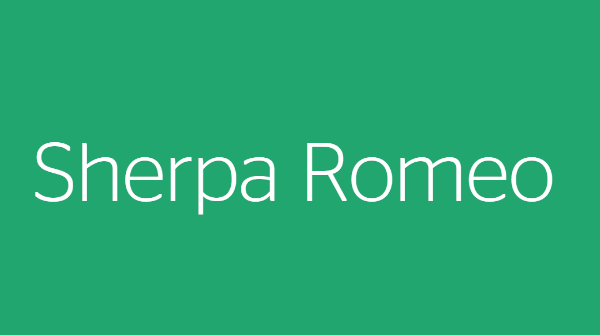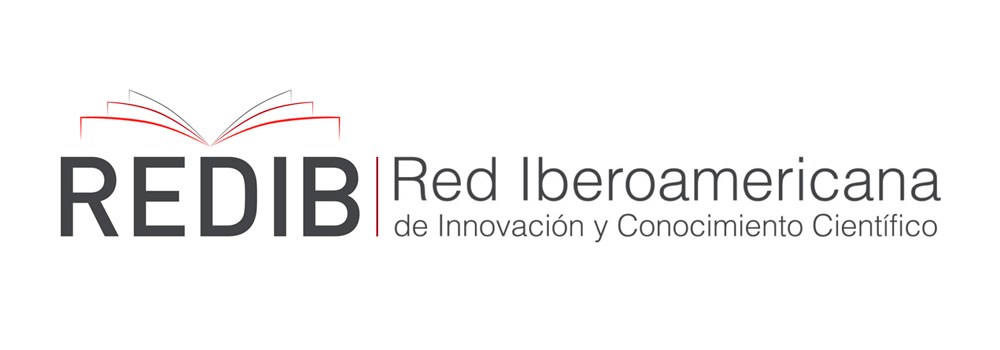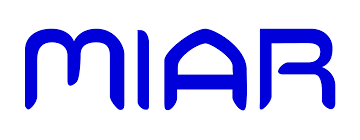Estrategias didácticas para promover el pensamiento creativo en aulas
DOI:
https://doi.org/10.35622/j.rie.2022.01.008Palabras clave:
creatividad, docentes, estrategias, estudiantes, pensamiento creativoResumen
En las últimas décadas se ha promovido una educación que desarrolle el pensamiento creativo. El docente debe diseñar estrategias de aprendizaje que fortalezcan en los estudiantes esta habilidad. El objetivo de este trabajo fue realizar una investigación minuciosa sobre el pensamiento creativo y las estrategias para promoverlo en este siglo. La metodología empleada fue la revisión documental de artículos publicados de diversas fuentes confiables. Concluyendo que existe la necesidad de estimular el pensamiento creativo de los estudiantes para generar distintas soluciones y enfrentar situaciones que se presenten en el contexto.
Referencias
Akpur, U. (2020). Critical, reflective, creative thinking and their reflections on academic achievement. Thinking Skills and Creativity, 37, 100683. https://doi.org/10.1016/j.tsc.2020.100683
Al-Dhamit, Y., & Kreishan, L. (2016). Gifted students’ intrinsic and extrinsic motivations and parental influence on their motivation: from the self-determination theory perspective. Journal of Research in Special Educational Needs, 16(1), 13-23. https://doi.org/10.1111/1471-3802.12048
Al-Mahasneh, R. (2018). The role of teachers in establishing an attractive environment to develop the creative thinking among basic stage students in the schools of Tafilah governorate according to their own perspective. Journal of Curriculum and Teaching, 7(1), 206. https://doi.org/10.5430/jct.v7n1p206
Araujo, O. (2019). Liderazgo docente para el desarrollo del pensamiento creativo. Mamakuna, 11, 72-110. https://revistas.unae.edu.ec/index.php/mamakuna/article/view/94
Chávez, H. (2021). Modelo de estrategias didácticas del dibujo para la creatividad en los estudiantes de primaria. Institución Educativa 10823 – JLO. [Universidad César Vallejo]. En Psikologi Perkembangan. https://repositorio.ucv.edu.pe/handle/20.500.12692/61115
De Prada, E., Mareque, M., & Pino, M. (2020). Creativity and intercultural experiences: the impact of University International Exchanges. Creativity theories, research, applications, 7(2), 321-345. https://doi.org/10.2478/ctra-2020-0017
Dogan, N., Manassero, M., & Vázquez, Á. (2020). El pensamiento creativo en estudiantes para profesores de ciencias: efectos del aprendizaje basado en problemas y en la historia de la ciencia. Tecné, Episteme y Didaxis: TED, 48, 163-180. https://doi.org/10.17227/ted.num48-10926
Flórez, J., López, L., Peña, D., Mejía, E., Flórez, X., Montero, D., Espinosa, V., Fonseca, T., Prieto, F., & Torres, P. (2018). Pensamiento metacognitivo y creativo como predictor de éxito escolar. Revista Espacios, 39(30), 26. https://www.revistaespacios.com/a18v39n30/a18v39n30p26.pdf
Glăveanu, V. (2020). A sociocultural theory of creativity: bridging the social, the material, and the psychological. Review of General Psychology, 24(4), 335-354. https://doi.org/10.1177/1089268020961763
González, C. (2021). Modelo de diseño instruccional para el aprendizaje de matemáticas para estudiantes con TDAH [Universidad Autónoma de Puebla]. https://hdl.handle.net/20.500.12371/12791
Gralewski, J., & Jankowska, D. (2020). Do parenting styles matter? Perceived dimensions of parenting styles, creative abilities and creative self-beliefs in adolescents. Thinking Skills and Creativity, 38(August), 100709. https://doi.org/10.1016/j.tsc.2020.100709
Hernández, J., Jiménez, Y., & Rodríguez, E. (2018). Desarrollo de competencias de pensamiento creativo y práctico para iniciar un plan de negocio: diseño de evidencias de aprendizaje / Developing creative and practical thinking competencies for a business plan: designing learning evidences. Revista Iberoamericana para la Investigación y el Desarrollo Educativo, 9(17), 314-342. https://doi.org/10.23913/ride.v9i17.383
Huang, N., Chang, Y., & Chou, C. (2020). Effects of creative thinking, psychomotor skills, and creative self-efficacy on engineering design creativity. Thinking Skills and Creativity, 37, 100695. https://doi.org/10.1016/j.tsc.2020.100695
Khuana, K., Khuana, T., & Santiboon, T. (2017). An instructional design model with the cultivating research-based learning strategies for fostering teacher students’ creative thinking abilities. Educational Research and Reviews, 12(15), 712-724. https://eric.ed.gov/?id=EJ1151755
Main, K., Aghakhani, H., Labroo, A., & Greidanus, N. (2020). Change it Up: Inactivity and Repetitive Activity Reduce Creative Thinking. The Journal of Creative Behavior, 54(2), 395-406. https://doi.org/10.1002/jocb.373
Marí, T., Baiget, E., Fuentes, J., & Zierof, P. (2010). Influencia de la coordinación del miembro no dominante en la eficacia del revés a dos manos en jugadores de tenis de iniciación. Revista internacional de derecho y gestión del deporte, 10, 78-101. https://dialnet.unirioja.es/servlet/articulo?codigo=3318974
Montaño, É. (2020). El juego consciente en el proceso del pensamiento creativo. Desde las emociones para no dejar de sentir tu ser; por medio del crear/ conectar/ comprender/ construir. Cuadernos del Centro de Estudios de Diseño y Comunicación, 109, 179-187. https://doi.org/10.18682/cdc.vi109.4222
Moreno, J., Llorca, M., & Huéscar, E. (2020). Estilo de enseñanza, apoyo a la autonomía y competencias en adolescentes. Revista Internacional de Medicina y Ciencias de la Actividad Física y del Deporte, 20(80), 563-576. https://doi.org/10.15366/rimcafd2020.80.007
Moura, T., Fleith, D., & Almeida, L. (2021). Desarrollo del pensamiento creativo en el ámbito educativo. Latinoamericana de Estudios Educativos, 17(7), 164-187. https://doi.org/10.17151/rlee.2021.17.1.9
Parra, E., Segura, A., & Romero, C. (2020). Análisis del pensamiento creativo y niveles de activación del alumno tras una experiencia de gamificación. Educar, 56(2), 475-489. https://doi.org/10.5565/rev/educar.1104
Puertas, S. (2016). La estimulación de los diferentes tipos de pensamiento creativo en niños entre los 8 y los 11 años, a través de la escritura de mitos sobre el origen del universo. Forma y Función, 29(1), 103. https://doi.org/10.15446/fyf.v29n1.58510
Puspitasari, L., In’am, A., & Syaifuddin, M. (2018). Analysis of Students’ Creative Thinking in Solving Arithmetic Problems. International Electronic Journal of Mathematics Education, 14(1), 49-60. https://doi.org/10.12973/iejme/3962
Redifer, J., Bae, C., & Zhao, Q. (2021). Self-efficacy and performance feedback: Impacts on cognitive load during creative thinking. Learning and Instruction, 71(June 2020), 101395. https://doi.org/10.1016/j.learninstruc.2020.101395
Saragih, S., & Napitupulu, E. (2015). Developing student-centered learning model to improve high order mathematical thinking ability. International Education Studies, 8(6). https://doi.org/10.5539/ies.v8n6p104
Saregar, A., Cahyanti, U. N., Misbah, M., Susilowati, N. E., Anugrah, A., & Muhammad, N. (2021). CORE learning model: Its effectiveness towards students’ creative thinking. International Journal of Evaluation and Research in Education (IJERE), 10(1), 35. https://doi.org/10.11591/ijere.v10i1.20813
Segundo, R., López, V., Daza, M. T., & Phillips, J. (2020). Promoting children’s creative thinking through reading and writing in a cooperative learning classroom. Thinking Skills and Creativity, 36, 100663. https://doi.org/10.1016/j.tsc.2020.100663
Shin, T., & Halili, S. (2015). Effective teaching of higher-order thinking (hot) in education. The online journal of distance education and e-learning, 3(2), 41-47. https://tojdel.net/journals/tojdel/articles/v03i02/v03i02-04.pdf
Triviño, L., & Vaquero, C. (2020). Educación artística y ciudadana en la formación inicial de maestras/os. Un estudio de caso sobre el desarrollo del pensamiento crítico-creativo-social a través de «Malamente». Revista Complutense de Educación, 31(3), 375-385. https://doi.org/10.5209/rced.63488
Wojciehowski, M., & Ernst, J. (2018). Creative by Nature: Investigating the Impact of Nature Preschools on Young Children’s Creative Thinking. International Journal of Early Childhood Environmental Education, 6(1), 3-20. https://eric.ed.gov/?id=EJ1193490
Yildiz, C., & Guler, T. (2021). Exploring the relationship between creative thinking and scientific process skills of preschool children. Thinking Skills and Creativity, 39(2), 100795. https://doi.org/10.1016/j.tsc.2021.100795
Zhuang, C., Yan, S., Nayebi, A., Schrimpf, M., Frank, M. C., DiCarlo, J. J., & Yamins, D. L. K. (2021). Unsupervised neural network models of the ventral visual stream. Proceedings of the National Academy of Sciences, 118(3), e2014196118. https://doi.org/10.1073/pnas.2014196118
Publicado
Número
Sección
Licencia
Derechos de autor 2021 Esmeralda Villegas

Esta obra está bajo una licencia internacional Creative Commons Atribución-NoComercial-CompartirIgual 4.0.



























